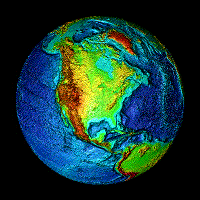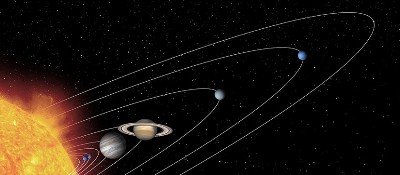

New Indivisible Planetary Science Paradigm
 
New Indivisible Planetary Science Paradigm |
 Important
Paper:
J. Marvin
Herndon, New Indivisible Planetary Science Paradigm (click here for pdf) Current Science,
2013, 105(4), 450-460.
Important
Paper:
J. Marvin
Herndon, New Indivisible Planetary Science Paradigm (click here for pdf) Current Science,
2013, 105(4), 450-460.
Summary: Massive-core planets formed by condensing and raining-out from within giant gaseous protoplanets at high pressures and high temperatures, accumulating heterogeneously on the basis of volatility with liquid core-formation preceding mantle-formation; the interior states of oxidation resemble that of the Abee enstatite chondrite. Core-composition was established during condensation based upon the relative solubilities of elements, including uranium, in liquid iron in equilibrium with an atmosphere of solar composition at high pressures and high temperatures. Uranium settled to the central region and formed planetary nuclear fission reactors, producing heat and planetary magnetic fields.
Earth’s complete condensation included a ~300 Earth-mass gigantic gas/ice shell that compressed the rocky kernel to about 66% of Earth’s present diameter. T-Tauri eruptions, associated with the thermonuclear ignition of the Sun, stripped the gases away from the Earth and the inner planets. The T-Tauri outbursts stripped a portion of Mercury’s incompletely condensed protoplanet and transported it to the region between Mars and Jupiter where it fused with in-falling oxidized condensate from the outer regions of the Solar System, forming the parent matter of ordinary chondrite meteorites, the main-Belt asteroids, and veneer for the inner planets, especially Mars.
With its massive gas/ice shell removed, pressure began to build in the compressed rocky kernel of Earth and eventually the rigid crust began to crack. The major energy source for planetary decompression and for heat emplacement at the base of the crust is stored energy of protoplanetary compression is the stored energy of protoplanetary compression. In response to decompression-driven volume increases, cracks form to increase surface area and mountain ranges characterized by folding form to accommodate changes in curvature. Differences among the inner planets are principally due to the degree of compression experienced. Planetocentric georeactor nuclear fission, responsible for magnetic field generation and concomitant heat production, is applicable to compressed and non-compressed planets and large moons.
The internal composition of Mercury is calculated based upon an analogy with the deep-Earth mass ratio relationships. The origin and implication of Mercurian hydrogen geysers is described. Besides Earth, only Venus appears to have sustained protoplanetary compression; the degree of which might eventually be estimated from understanding Venetian surface geology. A basis is provided for understanding that Mars essentially lacks a ‘geothermal gradient’ which implies potentially greater subsurface water reservoir capacity than previously expected.